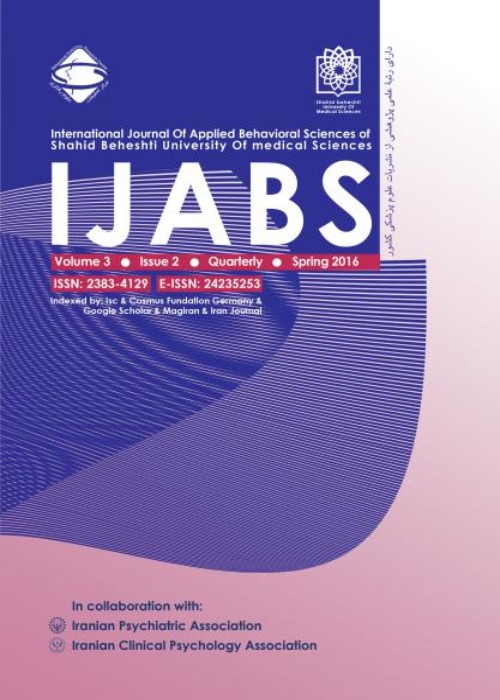Impulsive/compulsive sexual behaviors; Model fit test
Compulsivesexual behavior disorder is characterized by a persistent pattern of failure to control intense, repetitive sexual impulses or urges resulting in repetitive sexual behavior. The aim of this study was to standardize the Impulsive-compulsive Sexual Behaviors (ICSB) Questionnaire and to present and test an experimental model to explain impulsive-compulsive sexual behaviors.
The sample consisted of 257 individuals who referred to counseling centers in Tehran with complaints of sexual hyperactivity, sexual addiction and high-risk sexual behaviors. The Compulsive-Impulsive Sexual Behavior Questionnaire, the Persian version of Jackson-5 Scales Questionnaire, Attachment Style Questionnaire, Marital Intimacy Scale, Hulbert Index of Sexual Assertiveness (HISA) Questionnaire,Sexual Knowledge and Attitude Scale, and Emotion and Self-Regulation Questionnaire were used in this study. Using LISREL software, structural equation method was used to test the model and using SPSS statistical software, exploratory factor analysis was performed to standardize the questionnaire.
The research findings showed that, among the three components of personality: BAS (SC=-0.109), BIS (SC: -0.357) and FFFS (SC=0.617), have a direct effect on secure attachmentstyle. BIS SC: (0.2) and FFFS (SC=0.219) have a direct effect on the avoidant attachment style. The FFFS (SC=0.416) has a direct effect on anxious attachment style. Among the attachment styles, avoidant style (SC=-0.135) and anxious style (SC=-0.415) havea direct effect on emotion regulation. Sexual motivation (SC=0.174) on intimacy, (SC=0.386) on sexual knowledge and attitude, (SC=-0.225) on the emotion regulation and (SC=-0.405) on ICSBs, had a direct effect. There was a direct effect between intimacy (SC=0.291) on emotion regulation and (SC=-0.207) on ICSBs. There was a direct effect between intimacy, (SC=0.291) on emotion regulation and (SC=-0.207) on ICSBs. Also there was a direct effect between sexual knowledge and attitude (SC=-0.616) on ICSBs. Regulating emotion does not affect ICSBs.
The proposed model can explain the relationships between the occurrence of CISBs and ten effective factors (directly and indirectly) including: personality (BAS, BI S, FFFS), attachment style (secure, avoidant, Anxious), sexual motivation, intimacy, knowledge, and sexual attitude and emotion regulation.
- حق عضویت دریافتی صرف حمایت از نشریات عضو و نگهداری، تکمیل و توسعه مگیران میشود.
- پرداخت حق اشتراک و دانلود مقالات اجازه بازنشر آن در سایر رسانههای چاپی و دیجیتال را به کاربر نمیدهد.


